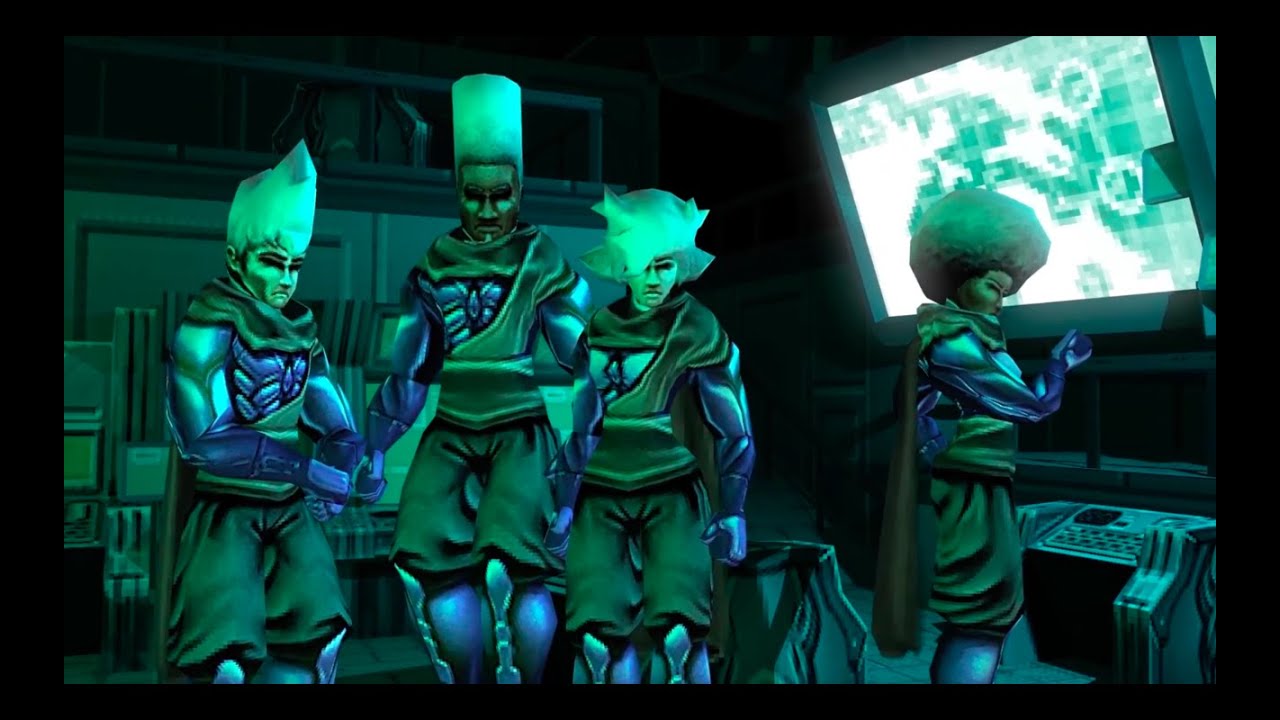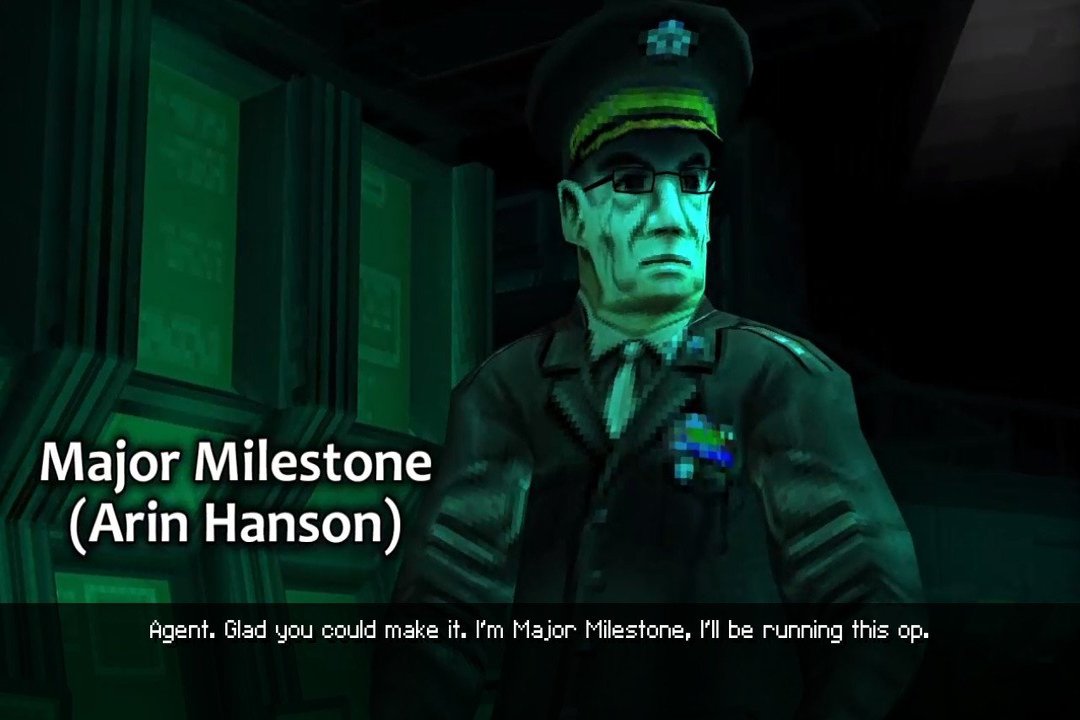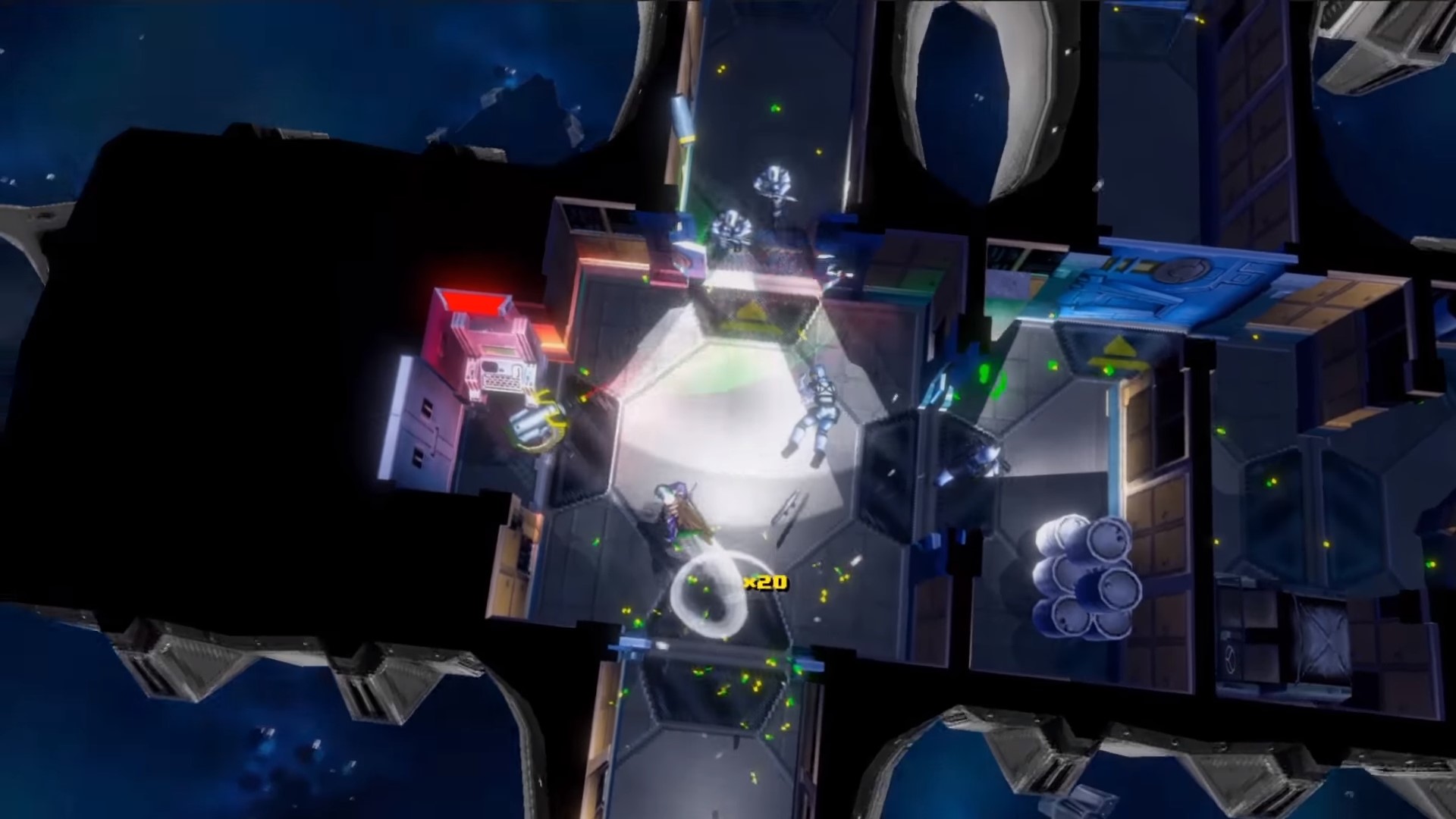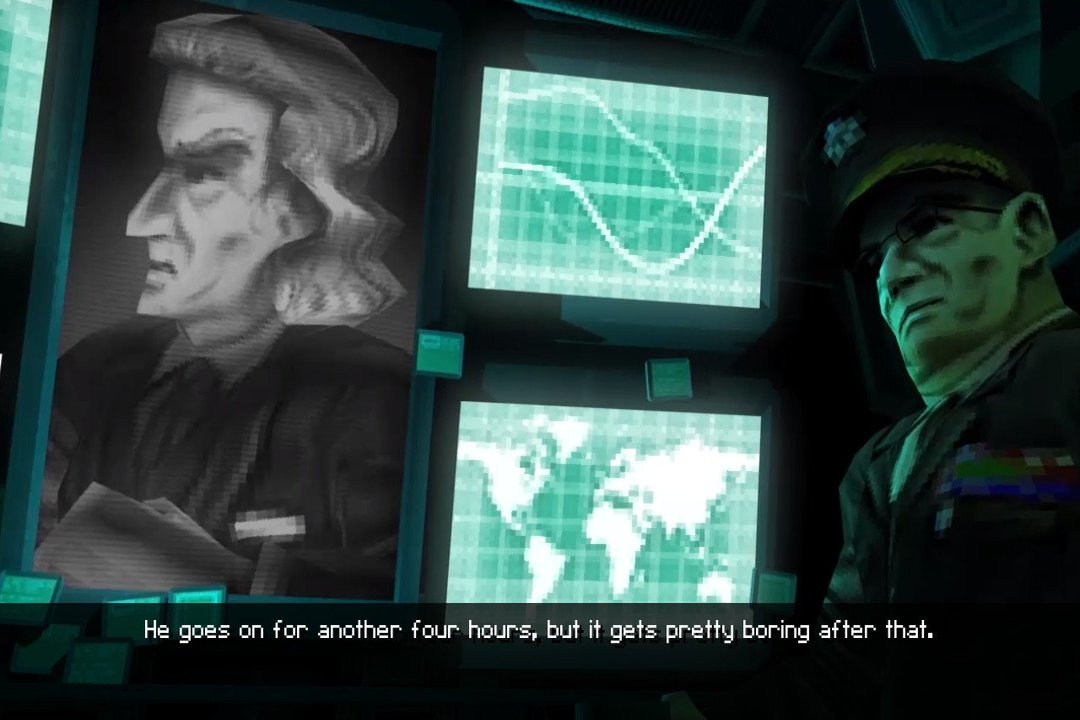Announced about a month before it was set to release, Never Stop Sneakin’ is a game whose very existence genuinely caught me off guard. It is a new project headed by indie game developer Dean Dodrill, who was responsible for the hit Metroidvania game Dust: An Elysian Tail back in 2012. In contrast to Dust, which was a 2D action-adventure game loaded with exploration and a fairly serious plot, Never Stop Sneakin’ is a simplified sort of stealth-action game presented in a similar style to a Mel Brook’s parody film.
And not just a parody of anything, but of the Metal Gear Solid series — in particular, the very first installment on the original PlayStation. It’s an intriguing premise: taking one of the most serious and yet also most silly gaming franchises under the sun and spoofing the nano-machines out of it. Unfortunately, Never Stop Sneakin’ launched several weeks ago on the Nintendo Switch on the same day as about 10 other games, including Enter the Gungeon and Yooka-Laylee, so it was somewhat overshadowed. I guess it’s pretty fitting that a stealth game like this slipped under the radar, isn’t it?
The obvious question here is did it deserve to be overshadowed? Is Never Stop Sneakin’ a game that you should take time out of your schedule to play as soon as you get the chance, even among all the major releases recently, or is it another game you potentially add to your list of games to maybe check out in the future if you find the time?
Mission Briefing
Never Stop Sneakin’ starts off on a strong note. The title screen greets you with a well-made and funny-bone tickling James Bond-style song number to set the tone, which is also quite reminiscent of Metal Gear Solid 3‘s “Snake Eater” number. The cut-scene presented shows off a comedically over-the-top scene of a general jumping from a plane without a parachute just to retrieve his coffee mug, all in Metal Gear Solid-faithful, PS1-style polygons with blurry, pixelated faces, and the intended tone is immediately established.
I also have to point out how the character Major Milestone is voiced by Arin Hanson, also known as the animator and internet personality Egoraptor. Considering his now famous and long-memed history of animated Metal Gear parodies in the form of Metal Gear Awesome 1 & 2, this is nothing short of genius casting. On that note, what little voice acting there is remains solid, being as serious as it needs to be, and as goofy as it needs to be, when the scene demands it. There’s not too much of it, but it gets the job done.
OH MY GAWD IT’S MEHTAL GEARRR. Sorry, I had to.
The plot is also a nice, tongue-in-cheek nod to the ludicrous politics and straight-faced melodrama of the Metal Gear series, with former Vice President Amadeus Guildenstern using a time machine to kidnap all of the U.S. presidents (even the bad ones). It’s all very self-aware and fun in its approach to mocking Metal Gear, and it displays a clear love and understanding of the series by mocking it in such a bold-faced way.
Additionally, the presentation in cut-scenes is spot-on to the source material of Metal Gear Solid, and the breaks between missions resembling a mobile game-style base management simulator were worth a few smiles, but in actual gameplay, the presentation is less impressive. The actual gameplay takes place in a level of graphical quality more akin to an upscaled PS2 game than one from the PS1 era, and the smooth textures and often drab, muted colors are both fairly separated from the style of the cut-scenes. They’re not all that impressive.
The music is pretty up-and-down in terms of quality as well. I wouldn’t call any of it bad, especially not the opening number, which I love, and legitimately get stuck in my head whenever I do so much as read the game’s title, but most of it is just forgettable. Any songs I remember — aside from the main theme — I only really remember because of how often they loop and repeat themselves over and over.
On that note, repetition is sort of a running theme in Never Stop Sneakin’, and it doesn’t take very long to notice this.
Never Stop Grindiiiiiiiiiiiinnnn’
The core gameplay is where most of Never Stop Sneakin‘s problems lie. The game presents a unique style of gameplay where the player can become a master stealth agent using only one stick and one button, and usually only the stick. Everything that the player does in-game is contextual and based on their position and inventory, whether they’re attacking a guard from behind, shooting them from a distance, hacking a door open, lobbing an EMP grenade, and so on.
The focus seems to have been on keeping the gameplay flowing and constantly moving, ensuring that you “Never Stop Sneakin'” as opposed to many other stealth games, where keeping yourself from getting spotted often brings the pace to a halt. Once you get used to the controls and the slightly off-putting overhead-ish perspective, then the game begins to feel fairly natural and fun. Keeping your score multiplier up by taking out as many guards as you can in quick succession while also pushing towards the exit can be great fun, and the controls making you feel so badass with so little effort helps that happen.
Deftly dodging between enemy vision cones before slashing one guard and shooting the other all with one hand can give you quite a rush.
Mechanically, there’s very little actually wrong with Never Stop Sneakin’, and the simplicity of its gameplay isn’t the biggest problem. What brings this game down the most is the fact that it begins to repeat itself very quickly. While I really did enjoy the game at the start, I wised up quickly to how much the game recycles its content. In all honesty, it’s very possible to see pretty much everything that the game has to offer in terms of gameplay in just an hour, and then that one hour repeats for several hours.
In order to move on to the next mission, in most cases you are required to earn a certain amount of in-game money, called ESP, to invest into your base of operations. You can get more ESP more easily by keeping your score multiplier up during gameplay, which involves taking out loads of guards in quick sucession, then collecting the goods while the numbers are jacked up. This stays true for the entire duration of the game.
While it is true that grinding for ESP is not your only objective, as there actual objectives during story missions, carrying these objectives out doesn’t change the gameplay in any significant way at all. They usually involve getting to a certain section of a level, having the Major tell you your objective is nearby, finding it, and leaving. This also stays fairly consistent throughout the game.
It dawned on me after about three hours that the game wasn’t about to change significantly any time soon. I had been killing the same guards with the same tools, sneaking around in the same environments, and fighting the same bosses, all of which had lost their charm quite some time ago. It honestly took me some time to realize that the levels were somewhat randomly generated, as the environments, enemy threats, music, and layouts repeated themselves so often that I genuinely couldn’t tell whether or not I was just playing levels over again.
The simplicity of the mechanics, which had initially impressed me — and still do to an extent — began to feel like a detriment to the intelligence of the game’s core premise and clever ideas. I slowly found myself drifting into auto-pilot and focusing on little more than getting my score multiplier higher and higher, all so I could earn cash to unlock the next stage, so I could then mow down the same guards in the same and similar locations to earn even more money.
I would have appreciated it had there been many more cut-scenes than there actually were. I found the writing and presentation in these to be the best the game had to offer, as well as the most entertaining aspect of the game, and there could often be 45 minutes to an hour between them, depending on how much in-game money I needed to grind for in order to progress.
In terms of variety, there are a handful of things to unlock in the game, but they’re all purely cosmetic. There are different agents to play as and weapons to use in missions, all with the same mechanics, and no variance in cut-scenes or dialogue — though it is nice to have something extra to unlock.
Without wishing to sound too mean, I think that this screenshot right here sums it all up pretty well for me:
Coincidence or tongue-in-cheek foreshadowing? You be the judge.
Never Stop Sneakin’ 3: Sale Needer
Never Stop Sneakin’ isn’t a bad game, really. It’s just underwhelming. The genuine charm and quality of its premise, writing, and pieces of its presentation are let down by competent yet unremarkable gameplay, constant repetition, and a dire lack of variety or surprises outside of cut-scenes and initial encounters.
While it wasn’t perfectly executed, it is still fairly unique as a game, especially for one meant to directly spoof a well-established gaming franchise. I did have some fun with it — even if most of it faded fast and there were patches of boredom in there — and there’s enough good here for me to say that I’m overall glad I played it.
It’s a game I can tentatively recommend, if mostly to people who really enjoy stealth gameplay, as well as people who like the idea of seeing Metal Gear Solid caught with its pants down. Never Stop Sneakin’ is fairly polished and unoffensive, but not particularly outstanding in the gameplay department, and it’s carried mostly by its charm. I would wait for a sale on this one.
Never Stop Sneakin’ is available now for Nintendo Switch. You can watch the trailer for the game down below (really soak up that theme song):
[Note: Review copy of the game provided by Humble Hearts.]










Published: Jan 8, 2018 03:09 am